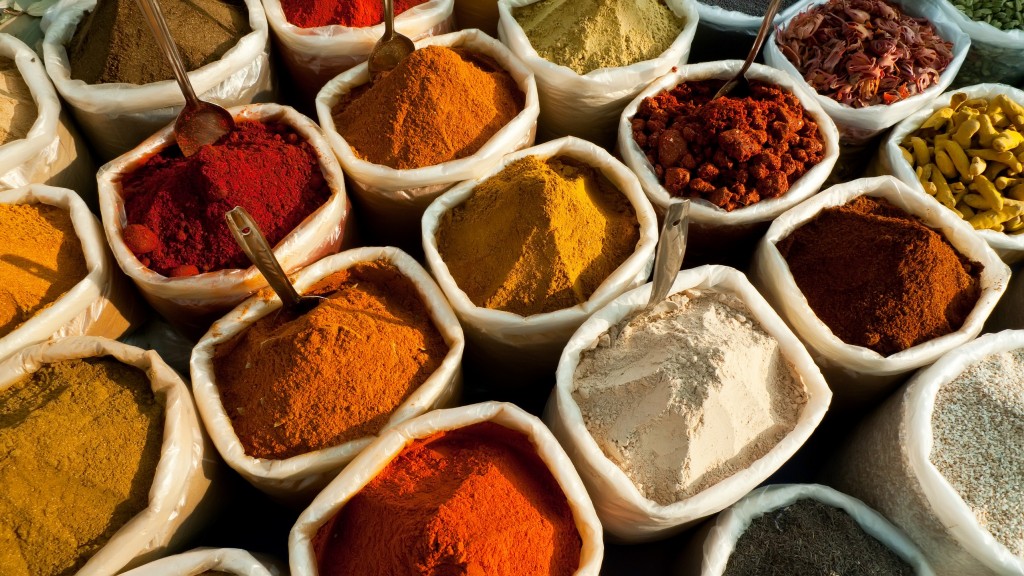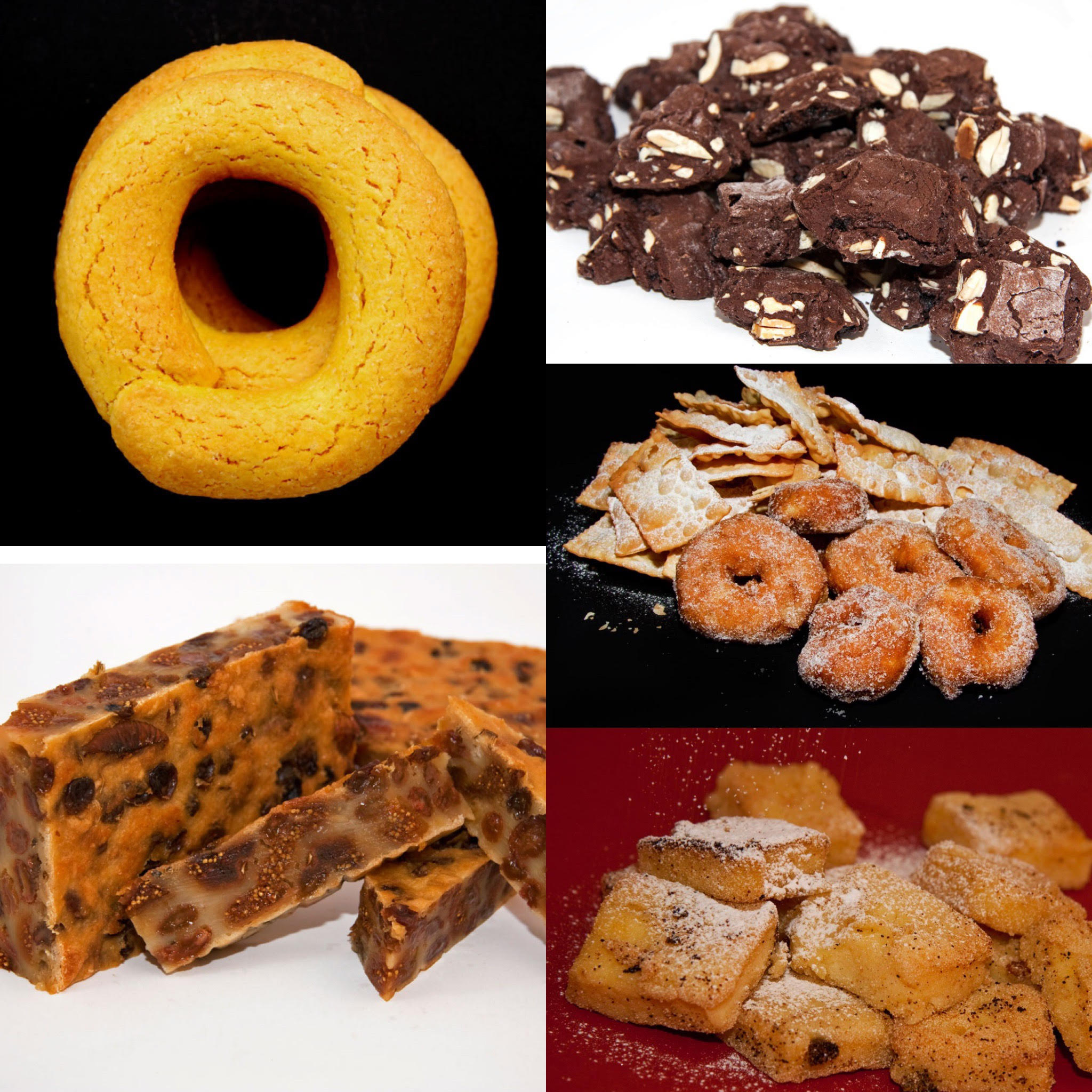The knowledge of a place, of a city, should also pass through the gastronomic culture because very often the cuisine of a people is the result of centuries of history, interlacements between distant countries, cultural exchanges of ideas, tips and goods: tasting a culinary product and learning history means knowing the roots of a population, its genesis and its past, the interactions and influences had with foreign peoples. This is also true for Venetian cuisine.
The political and economic power of the Republic of the Serenissima allowed over the centuries to weave an important mesh of mercantile traffic with the Eastern world: the contact with this world so different inspired the art and architecture of Venice, but also influenced the cuisine. And this is why the Venetian cuisine could almost be called fusion, multi-ethnic by historical vocation, and refined by the presence of spices
The spice route, with exotic flavors and oriental influences

It is to the Serenissima Republic that we owe the introduction into the western world of the species, a Latin term that indicated something special, of value, as opposed to the ordinariness of the usual products.
The spices, coming from lands wrapped in myth, like the Far East and Asia, had the merit of evoking unknown sensations, they introduced new flavors and refined perfumes that delighted palate and soul. From the distant world came black pepper and cinnamon, nutmeg, ginger, cloves and vanilla. And in the spread of these exotic products, Venice soon assumed the monopoly: the precious merchandise purchased in the East to be sold in Europe passed through Rialto, creating the legendary spice route.
With the subsequent birth of the Fontego dei Turchi it was foreigners who came to the Lagoon with their oriental and lustful goods, but they also brought their customs, their habits, including culinary ones: the cultures of the people began to amalgamate, to interact and influence each other among them. Influences that we still find today in daily culinary habits.
The knowledge of cane sugar was added to the spices, after the 12th century Crusades, traded by the noble family of Giorgio Corner, who owned sugarcane plantations in Cyprus, where his daughter Caterina Corner reigned, became Queen of Cyprus, Jerusalem and Armenia for marrying James of Cyprus. The raw product was then processed and refined in their home on the Grand Canal.
To benefit from the union of fragrant spices and sugar was undoubtedly the confectionery, worked by scaleter, as the ancient pastry chefs were called, from the scaletes, typical sweets of the wedding, now disappeared.
Traditional, rich and fragrant sweets

The oldest dessert that the history of Venice remembers is the fritola (fritoa) from the term friggere: it is in fact a pancake with a soft and fragrant inside and with the outside made golden and crispy by frying. Initially flavored with rose and orange water, thanks to the interaction with the East, they were enriched with sultanas, pine nuts, cinnamon and nutmeg: this is the official and original version that is still consumed for the calluses. It even became a Veneto national dessert in the 1700s and today it is a typical and indispensable preparation of the Carnival, but it is very easy to find them all year round, even in the most delicious version with cream or zabaglione filling. A delight!
But the Venetian confectionery tradition is mainly composed of products rich in nutrients, substantial and with the peculiarity of being able to be preserved for a long period, since they constituted the food of the sailors during the long sea crossings: they are, therefore, dry preparations, biscuits rich in butter and eggs.
The most common are the baicoli, so called because their shape resembles that of the mullets, called baicas. They look like slices of toasted bread, but this is due exclusively to the preparation: made with flour, eggs, butter, sugar and yeast in a single strand, they are then cut into thin slices. They are very fragrant and good if tasted alone, but also mogiati (soaked) in coffee or zabaglione, and if you are greedy, covered with a veil of jam or spreadable chocolate. A joy for the senses!
Around the city the shop windows of the pastry shops triumph of the yellow of the zaeti (gialletti) that owe their name to the dialect word zal which means yellow. The color is given by the presence of corn flour, which makes them extremely crunchy and scrocchiarelli, to which are added eggs, butter, sugar, vanilla and sultanas; they are then cut into almost rhomboid shapes. Small explosions of flavor!
From the nearby Burano come the bussolà, strictly with the accent on a. These, too, owe their name to their shape, that of a donut with a hole that is called busà in the Venetian dialect. Lovingly prepared by the wife of fishermen forced to stay long periods at sea, they are very crumbly biscuits due to the considerable presence of butter, and scented for their aroma of vanilla: such is the scent that makes the air in the calluses pleasantly sugary, and it seems are used by grandmothers to perfume linen. In recent times the little donut form has given way to the s-shaped one, in order to be able to better mend them. Very fragrant, one leads to another!
If you are a lover of strong beautiful flavors then you will have to taste pevarini: biscuits with a strong peppery note are excellent when drenched in wine. The original recipe includes a mixture of brown flour, molasses, lard, honey, yeast, black pepper, cinnamon, cloves and ginger, but today for practicality the molasses has been replaced with sugar and lard with butter. They are certainly the most "oriental" sweets in the history of Venice. For strong palates.
But Venetian pastry is not just biscuits. The pan of the doge is one of those most common desserts in the pastry shops and bakeries of Venice, which will satisfy your palate and your spirit: it was the favorite preparation of the doge Silvestro Valier, inevitable presence in every one of his banquets. It is a large, soft and richly stuffed brioche: a mixture of flour, sugar, eggs and butter then enriched with honey, cinnamon, nuts and dried figs. Sweet and luxurious.
If you are part of the group of the most incorrigible gourmands and love the richest desserts, then you will not be able to leave Venice without having tasted the moors, a sweet pastry enriched with toasted hazelnuts and almonds, then frosted with a cascade of dark chocolate. Simply irresistible!
For the more romantic, instead, a sweet to be enjoyed in the moonlight is the kiss in a gondola: two very tasty and sweet white spumiglie (meringues) joined together by a soft chocolate cream. Dividing them is a true act of love!
The Rosa Salva pastry shop, the desserts jewelery

Did I tease your taste buds? Well! Now, however, we need to go from words to deeds: we must eat, taste and perhaps make stocks to take home!
The place to be is Rosa Salva pastry shop, an excellent reality of Venetian confectionery art. Founded in 1870 by the initiative of Andrea Rosa to whom we owe the enlightening idea of having reinvented a chef at home in the noble palaces of Venice and the surrounding area: what was now commonly known as catering / banqueting was born. It was then his son Antonio, who was given the nickname Salva, a few years later to affirm and increase the prestige of the family business by becoming chef of the royal house.
Even today, Rosa Salva is a benchmark of excellence in the gastronomic panorama of Venice, especially for confectionery: an activity that masterfully links tradition and innovation.
The high quality of Rosa Salva products comes from the scrupulous and rigorous selection of ingredients and raw materials, which are the basis of a scrupulous, artisan production process, today as yesterday. Added to this are technique and creativity, essential guides for the realization of a fascinating harmony of taste, which has allowed its players to win numerous prestigious national and international awards.
In their pastry shops, located in various parts of the city, you will be welcomed by the lively polychromy of the many products that fill the windows, in a mixed atmosphere between ancient and modern, between well-being and tranquility.
Visiting one of Rosa Salva's patisseries means tasting traditional sweets steeped in history, such as bussolà, zaeti, baicoli and mogliali in a hot coffee or in an excellent cup of zabaglione cream of artisan preparation, but also sweeten your hands by eating fritoe which here are made in the shape of a donut to optimize cooking. The sweet tooth will remain fascinated by the variety and beauty of the chocolate pralines with the most varied fillings, for all tastes. It is impossible to renounce the variety of homemade ice cream, to be enjoyed in the most classic or most unusual flavors, strictly with lots of whipped cream.
The study and research have led, in recent years, to the development of modern techniques and contemporary products inspired by the great french patissiers: glazed cakes and single portions, meetings of unusual tastes and different textures have been added to the traditional products, from soft to crunchy, from the soft to the ethereal, designed and built as true works of architecture, satisfying for the eyes and the palate, moreover the confectionery must create wonder!
It is quite easy to immerse yourself in the sugary world of Rosa Salva, thanks to the locations in the city, all central and easy to reach: between an exhibition and a walk, the ideal place to take a pleasant break.
Rosa Salva is an unmissable journey in the art of confectionery of yesterday and today, between technique and passion, between tastes and sensations that are remembered: pastry is the jewelry of culinary art, and Rosa Salva is a treasure chest full of jewels.
take note: these are the headquarters of the Rosa Salva Pastry shop
- Calle Fiubera 950, San Marco
- Campo Santi Giovanni e Paolo 6779, Castello
- Via Cappuccina, 17, 30172 Mestre VE
- Palazzo Franchetti 2847, San Marco
- Gran Teatro La Fenice, Campo Fantin 1965, San Marco
also within:










Lascia un commento